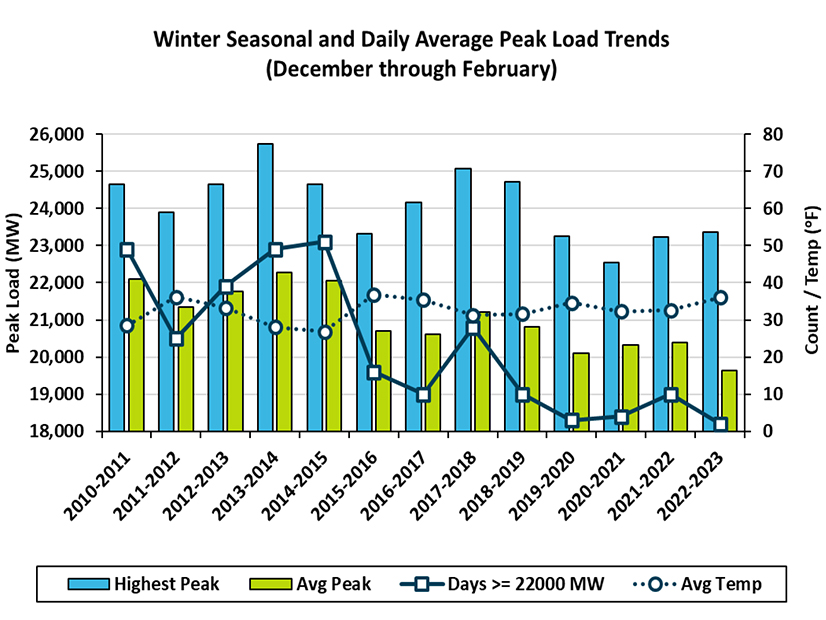December’s winter storm and early February’s cold snap challenged the New York grid, causing outages and operational flow orders, but they did not cause any emergencies, NYISO told the Operating Committee last week.
Temperatures this winter were higher than normal, with the average temperature in Central Park during January being 43.5 degrees Fahrenheit, nearly 10 degrees over the 1991-2020 average. This January ranked highest in terms of average hourly temperature (37.5 F) among all years since 2011, and there were only 11 days in the month with a peak load of more than 20,000 MW, with the average since 2011 being 26.
But the two extreme weather events caused temperatures to drop rapidly. Aaron Markham, NYISO vice president of operations, noted that on Dec. 24, it was 50 F at noon in both Albany and New York City; by 8 p.m. that night, it was 15 F. Both natural gas pipelines and gas-fired generators experienced forced outages during the December storm because of frozen production wells and compressor stations.
Still, peak load only reached 22,004 MW during the storm, partly because, Markham said, it coincided with the Christmas holidays, which happened to be over the weekend. Conditions were tighter during the February cold snap, with the peak load of the season occurring on Feb. 3 at 23,369 MW, just shy of NYISO’s forecast of 23,893 MW. Temperatures dropped to as low as ‑2.3 F on Feb. 4, averaging 16.5 and 9.5 on Feb. 3 and 4, respectively.
However, Markham noted that there was little precipitation during the February event, and gas supply interruptions and plant outages were less than during the storm.
Markham also highlighted that significant amounts of stored fuel was burned during the two events, concerning the ISO about replenishments for next winter. NYISO also heavily relied on oil-fired generation during the peak periods, with oil supplying 23% of power during the peak hour; gas supplied 24%. Gas prices in Iroquois Zone 2 reached $135.50/MMBtu on Feb. 5.
Nevertheless, NYISO was able to operate through the two events without calling on demand response resources or issuing any emergency actions, such as voltage reductions or public appeals for conservation.

